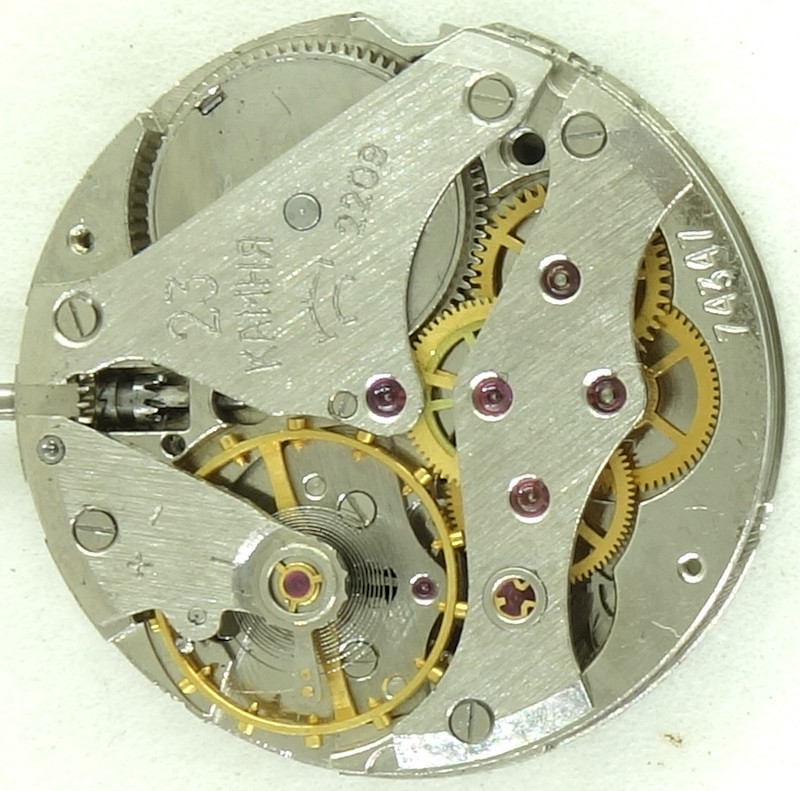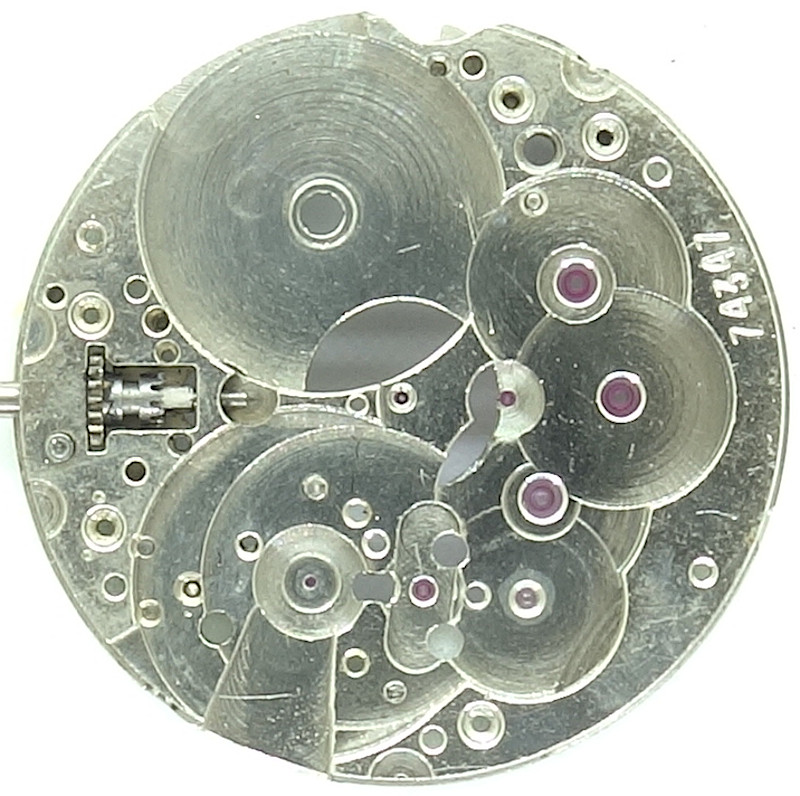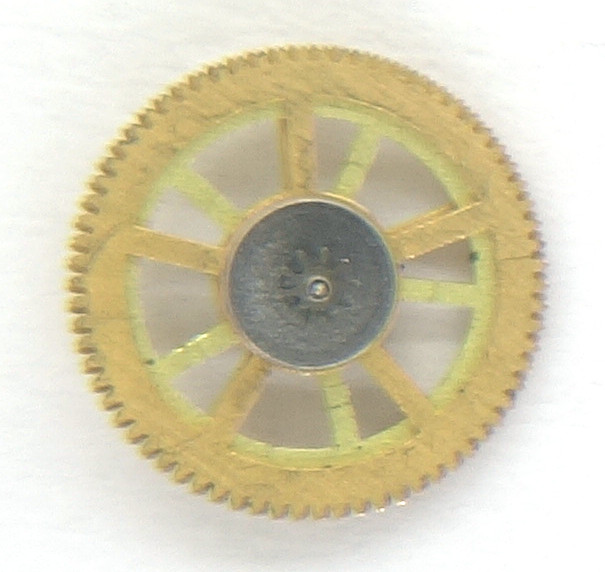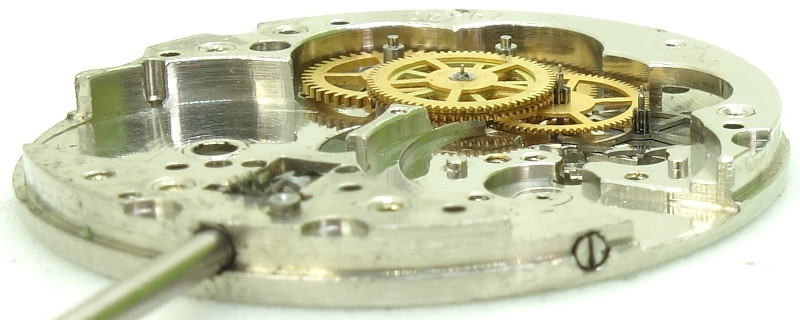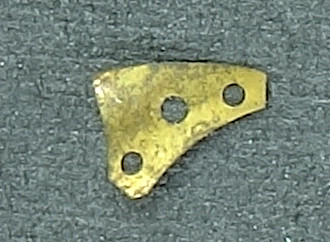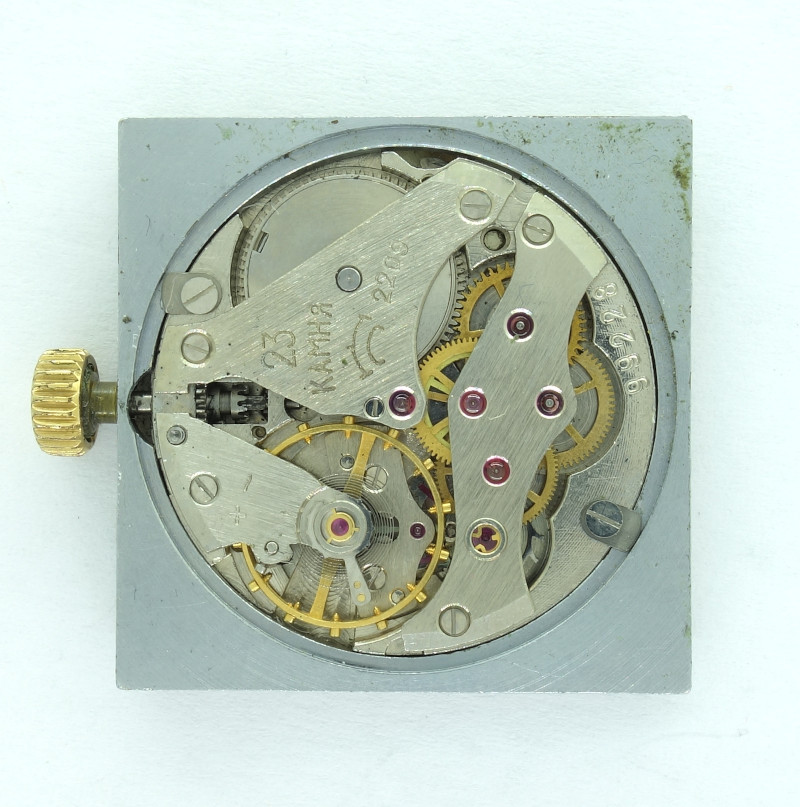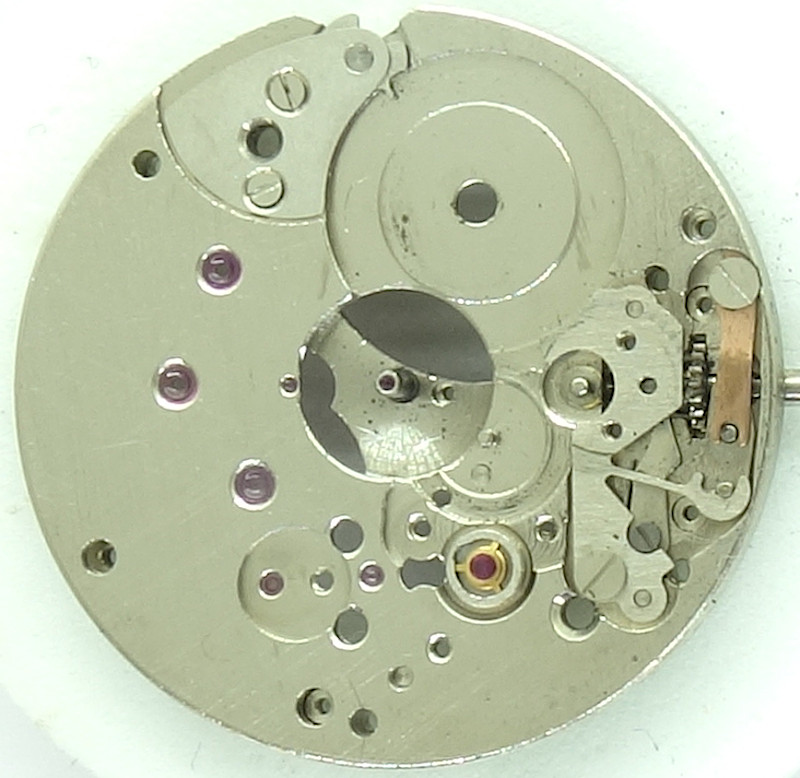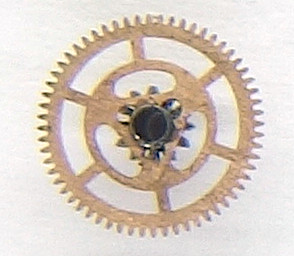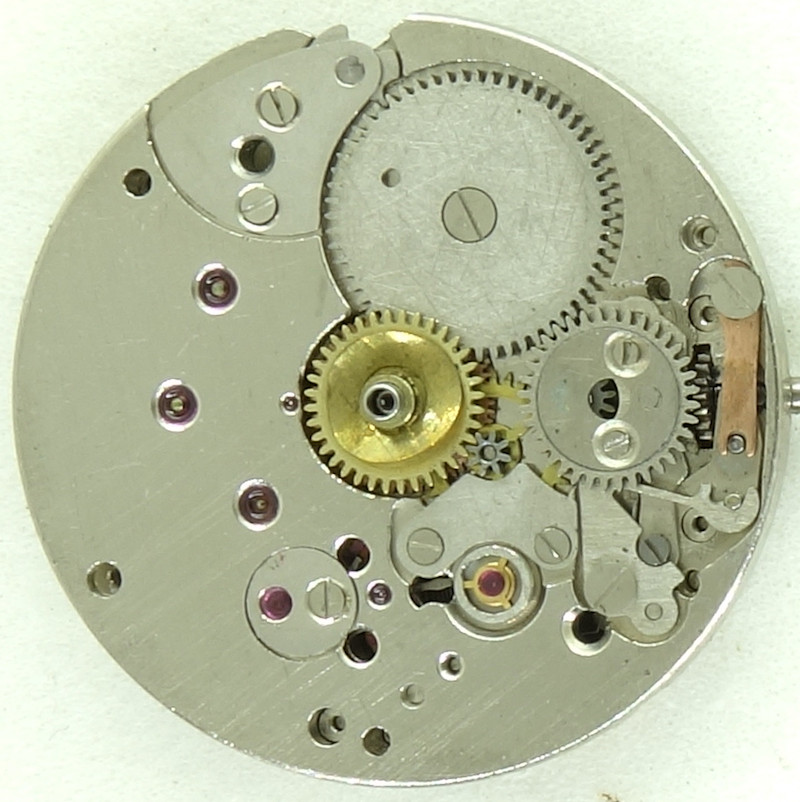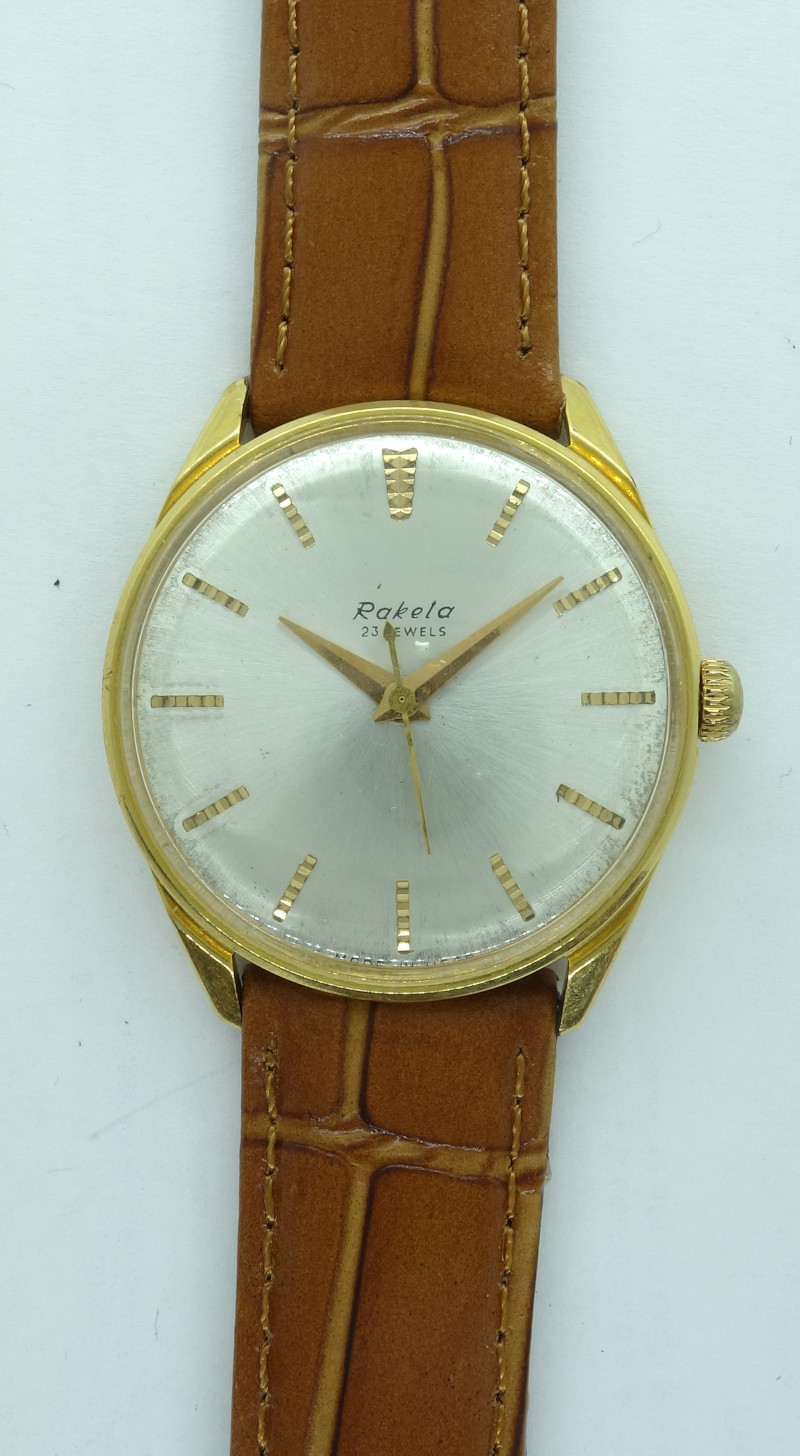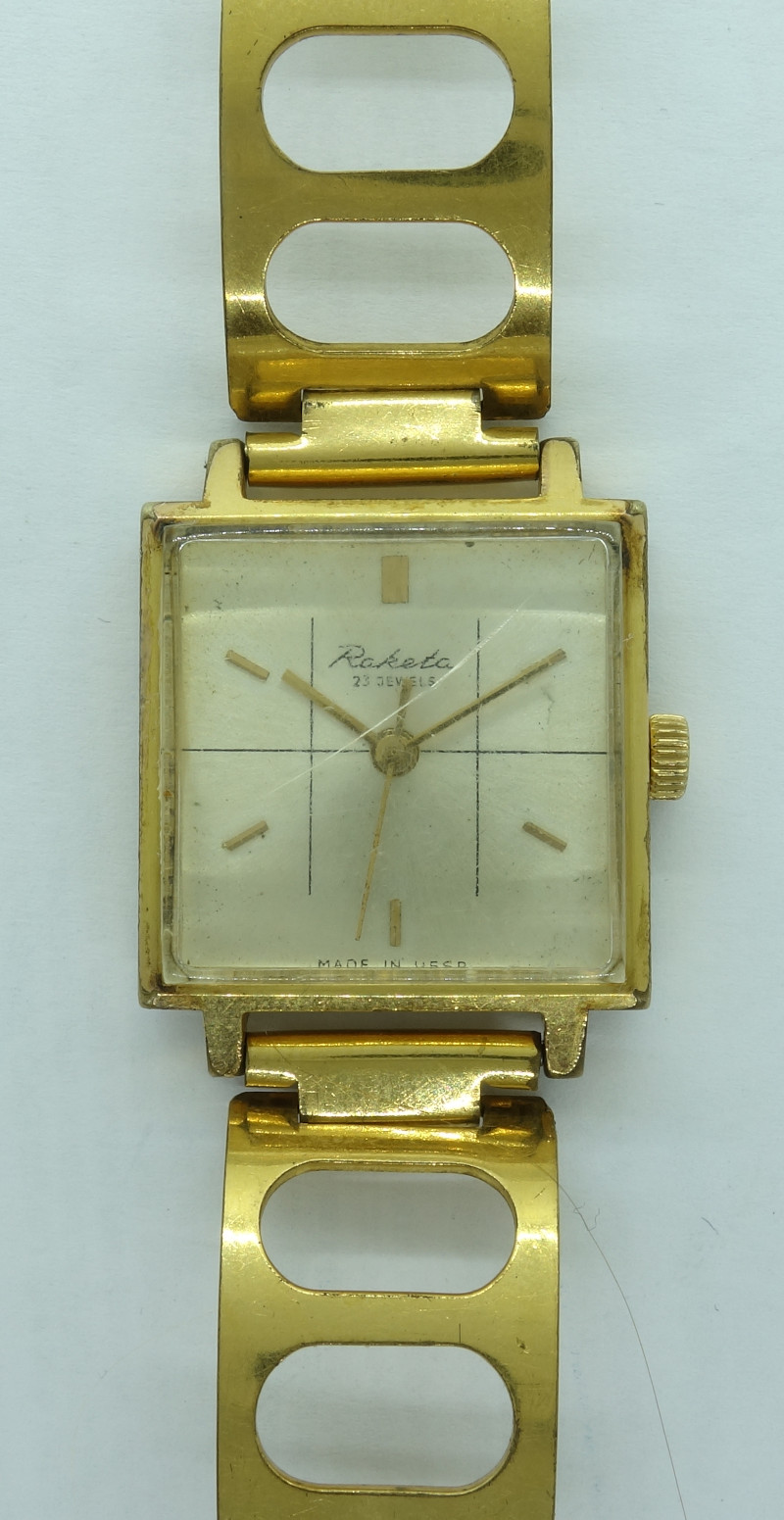Description
Why?
This is the most often asked question, when you inspect this movement:
Its construction is so odd, its sizes so impractical, that you can only ask what it is all about. A truly verifiable explanation for this could not be found, perhaps it was just intended to demonstrate how far they are Russian watchmaking had come within just a few decades.
But one after another:
As the caliber number indicates, the Raketa 2209 has got a diameter of 22mm or 9 3/4 lignes. For a ladies’ watch already too big, for a gents watch too small.
It is well executed, there are bearing jewels everywhere, where needed, even the seconds tube onn the dial side, which bears the long center seconds axle, has got a bearing jewel in its inner side!
At position 3 o’clock near the center, you can see the bearing jewel of the third wheel, whose pinion drives the hand works on the dial side. This construction saves lots of space and allows extra large mainspring barrels and balances.
The gear train is really odd. It has got a extra transmission gear without drive, whose both pinion differ only fractions of a millimeter in length, which makes working on it really unintutive.
The mainspring barrel is extraodinarily flat, which results in an also flat mainspring with reduced power, which is normally a contraindication for using an additional gear.
However, on the Raketa 2209, the mainspring barrel drives the reduction wheel, which is followed by a large driving wheel, a double third wheel,the seconds wheel and finally the escape wheel. The latter is beared on the movement side under a cap jewel with in inhouse shock protection.
The double third wheel ensures smooth operation of the center seconds hand without the need of a spring, which would add additional friction to the already pretty low powered gear train.
As balance wheel, a pretty flat screw balance is used, with two very thin, long arms. The screws all have the same distance on the rim and so have more an aesthetical function rather than poising the balance wheel. This was pretty standard on russian movements with screw balances.
The balance beats with semi-slow 19800 A/h, which can be regulated on the long hairspring key only. It is beared in generic three-leg russian shock protections and regulates a swiss pallet lever escapement.
A common item on russian movements is the balance cock spacer, an extra flat brass plate, which is put between the balance cock and the base plate and which should kind of adjust the height play of the balance bearing.
Since this movement is a bit too small for regular gents’ watches, it was often beared on a massive square movement holder, especially on square watches, which were popular in the 1960s.
On the yet empty dial side, you can see at position 12 o’clock the ratchet. In combination with a yoke winding system, this is an unusual combination.
The hands are driven indirectly by the third wheel at position 9 o’clock near the center.
It’s also interesting, that the hands setting wheel is located below the crown wheel, which is not yet covered here.
As usual on movements, where the hands are driven indirectly on the dial side, the cannon pinion is mounted with a slipping clutch onto the minute wheel.
Asthetically, the Raketa 2209 is a gem on the dial side, too!
Conclusion
As beautiful and fascinating this movement might be, its construction is unfortunately less than optimal.
Sure, it’s flat and it also shows the time, but the screw balance, which is far too light, leads to enormous differences in position and reacts very sensitively to changes in position, and the additional transmission wheel exacerbates the problem due to the low overall height and the a bit too weak, flat mainspring.
As evidence of the achievements the Russian watch industry can achieve within just a few decades have come, the Raketa 2209 is ideal, maybe that was actually the reason why this unusual movement was launched in the 1960s.
Timegrapher result
All specimen were hard to regulate on the timegrapher and show, how the odd construction negatively interfers the rates and postion stability.The results were taken from the (slightly serviced) movement of the almost NOS dress watch.
| horizontal positions | |||
|---|---|---|---|
| dial up | -70 s/d | 167° | 5.7ms |
| dial down | -19 s/d | 177° | 9.9ms |
| vertical positions | |||
| crown right (12 up) | +55 s/d | 162° | 6.1ms |
| crown up (3 up) | -320 s/d | 167° | 9.9ms |
| crown left (6 up) | -300 s/d | 176° | 8.4ms |
| crown down (9 up) | +66 s/d | 171° | 5.5ms |
Technical data
| Manufacturer: | Raketa |
| Caliber: | 2209 |
| Size: | 9 3/4''' (measured: 22,0mm) |
| Height: | 2,70mm |
| A/h: | 19800 |
| Number of jewels: | 23 |
| Escapement: | Pallet lever |
| Balance types: |
monometallic screw balance (two legs) |
| Shock protection(s): |
3 arms, russian |
| Balance bearing / direction hairspring: | Counterclockwise |
| Moveable stud: | no |
| Adjust mechanism: | Hairspring key |
| Construction: |
|
| Construction type: | solid construction |
| Winding mechanism: | yoke winding system |
| Setting lever spring: | 5 hole(s) |
| Features: |
|
| Inventory number: | 21033 |
